“Fall In Love with The Problem”: A Field Trip to X, Google’s Inventive Sibling
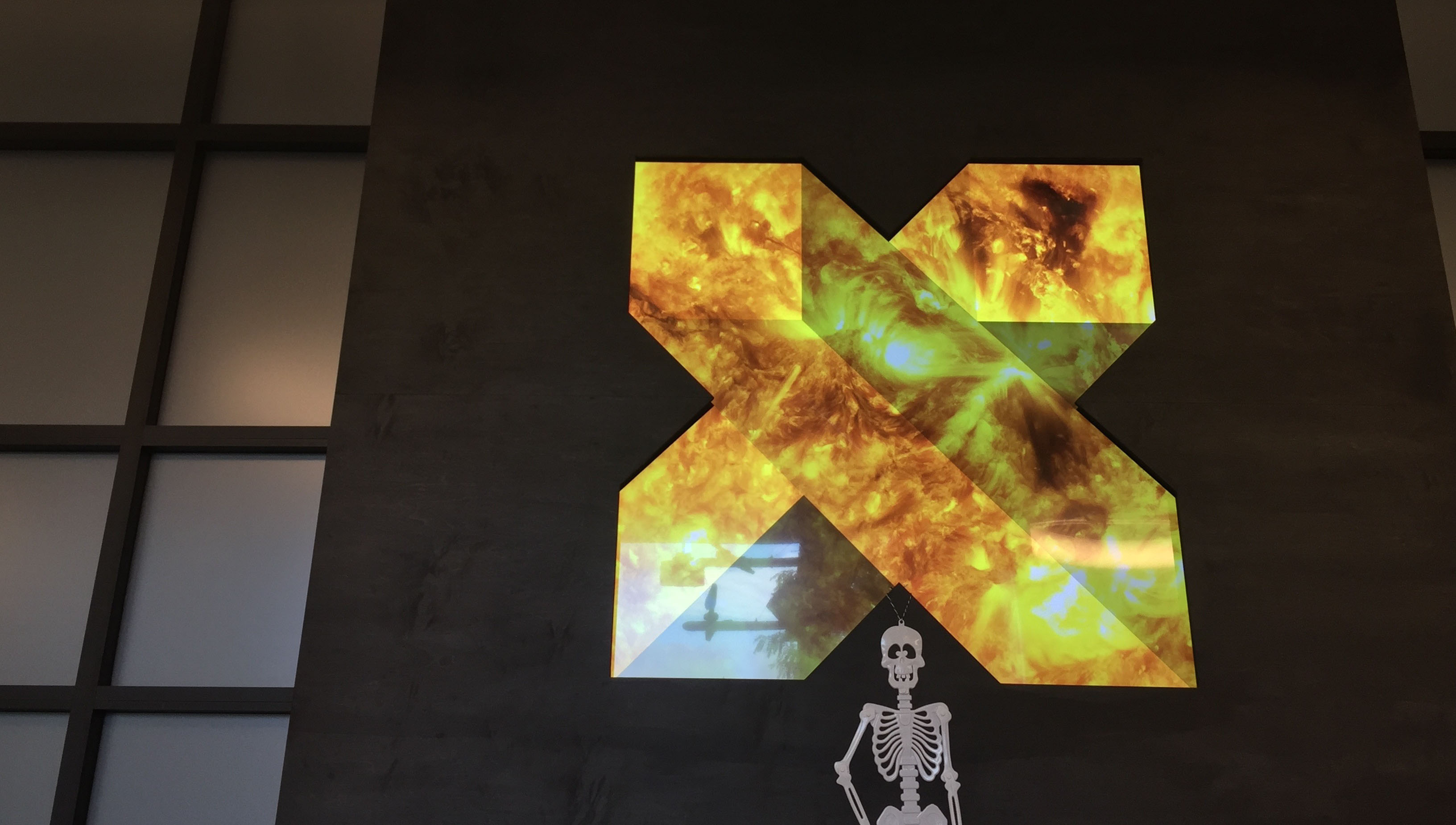
Inside the reception area at X, with a Halloween-themed decoration.
Text and photos by Inés Gutiérrez
SAN FRANCISCO—When I woke up on the cloudy morning of 30 October, I thought to myself, “Today I get to look inside X, the secretive innovation lab.” It was field trip day at the World Conference of Science Journalists 2017, and a group of us headed south toward the so-called Moonshot Factory in Mountain View, California.
I had done research on the place, but I didn’t know what to expect. Everything written about it revolved around mystery. When we arrived, we saw a conspicuous sign: “X: Visitor Lobby.” Just then, the sun came out—and that’s when I realized they were welcoming us.
The building used to be a mall, so it has tall ceilings, open spaces and beautiful light from all the big windows. But our host quickly warned us: “No photographs from here on.” I looked around and wondered why. She told me something could be written on one of the boards or on a piece of paper—even that was classified. (All photos in this story are from the lobby and other public exhibits within X.)
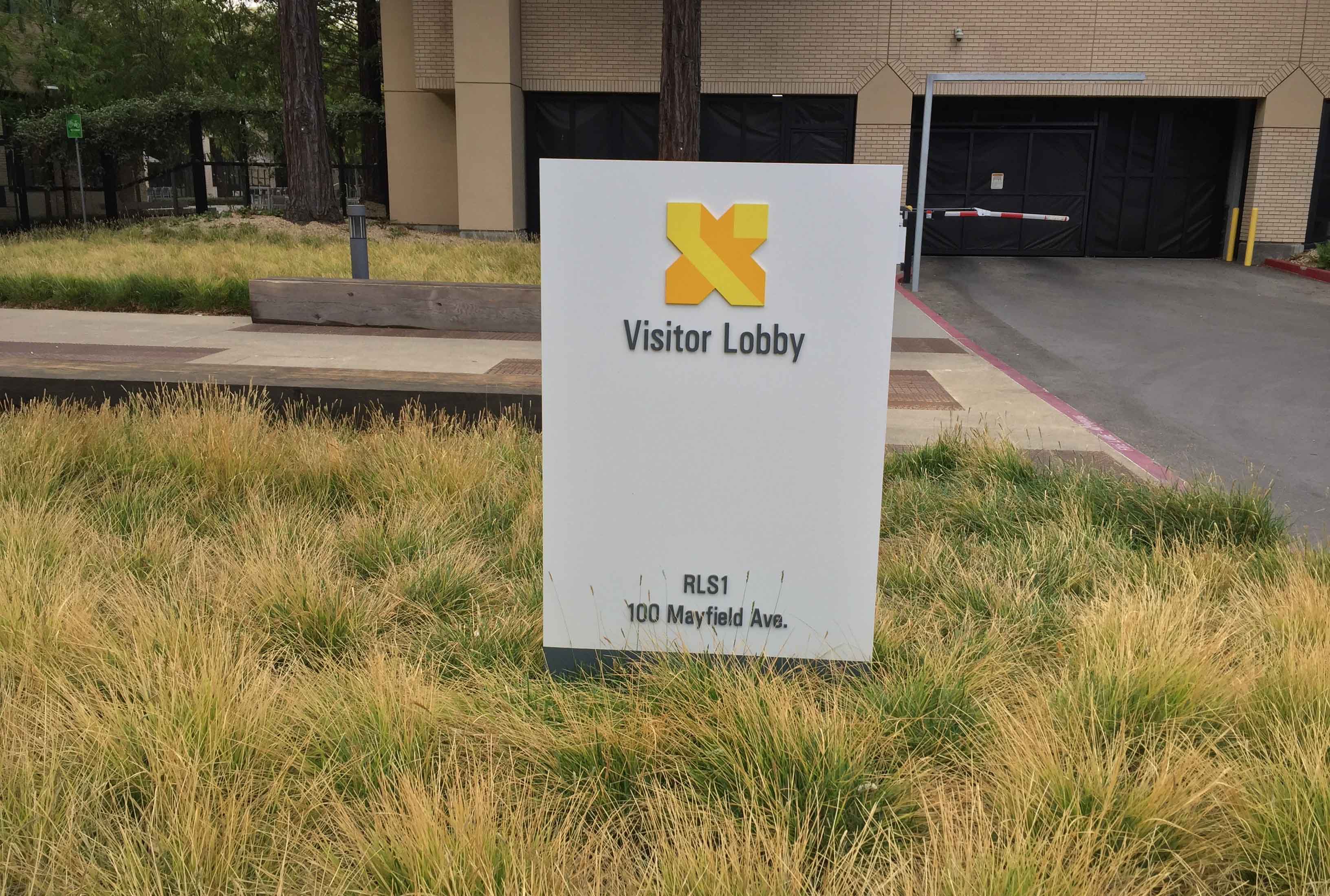
The welcoming sign outside X.
A few minutes later, a man entered the room on roller skates. It was Astro Teller, co-founder of X. He told us the company’s story and explained their job: Find a huge, unsolved problem and assemble a team to plan an almost-science-fiction solution that could later become a business. He clarified that since 2015, X is no longer a part of Google; it’s like a sibling, and Alphabet is their parent company.
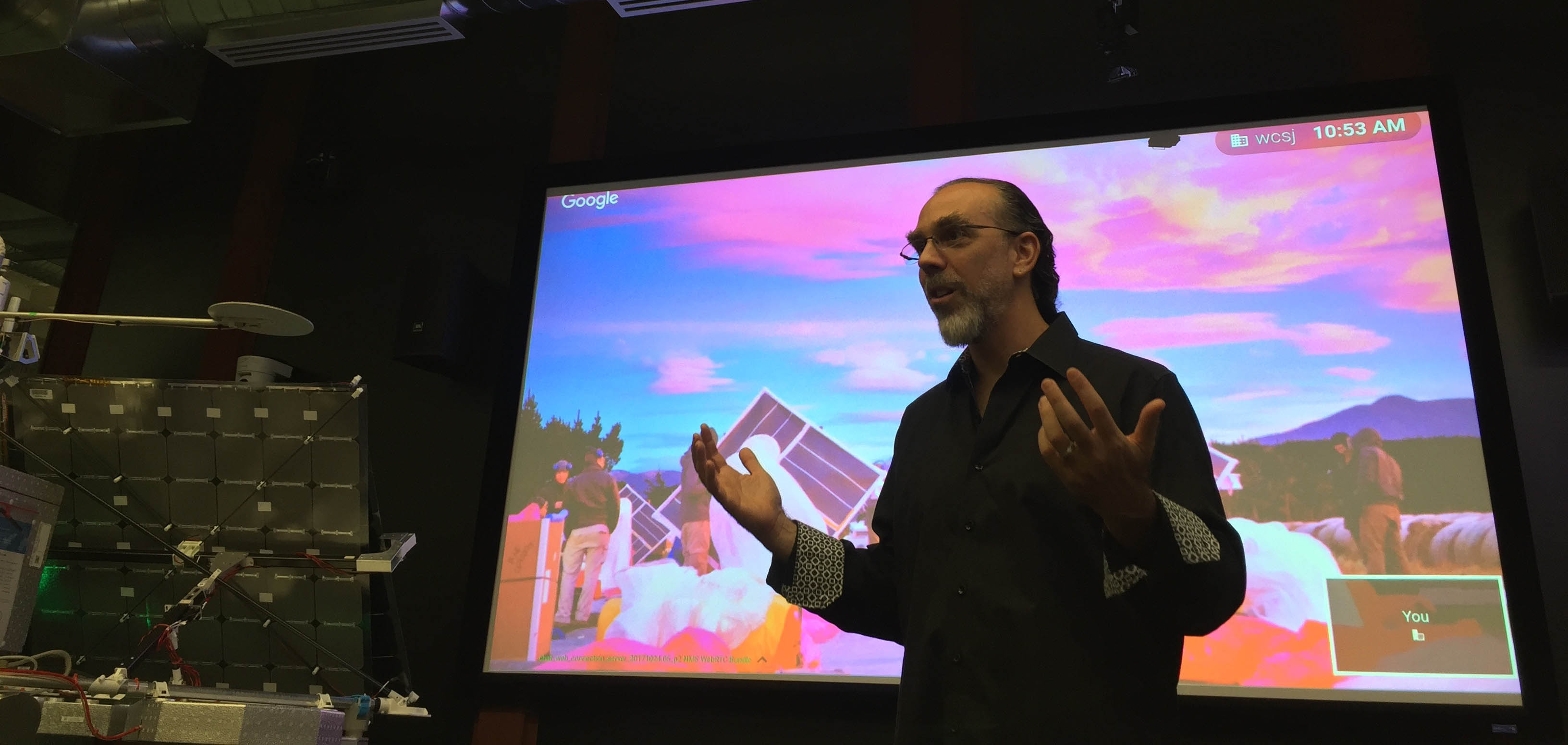
Astro Teller, co-founder of X, explains the “Moonshot Factory philosophy.”
Some of X’s products include the self-driving car Waymo, contact lenses that measure glucose, and house heating technology that runs on geothermal energy.
To become part of X, engineers must prove their ideas are doable and not completely insane. Teller also spoke of the urgency to plan ahead. For instance, he noted, “You can’t imagine all the ways in which our current healthcare is barbaric by the standards of 50 years from now, because you haven’t seen 50 years from now.”
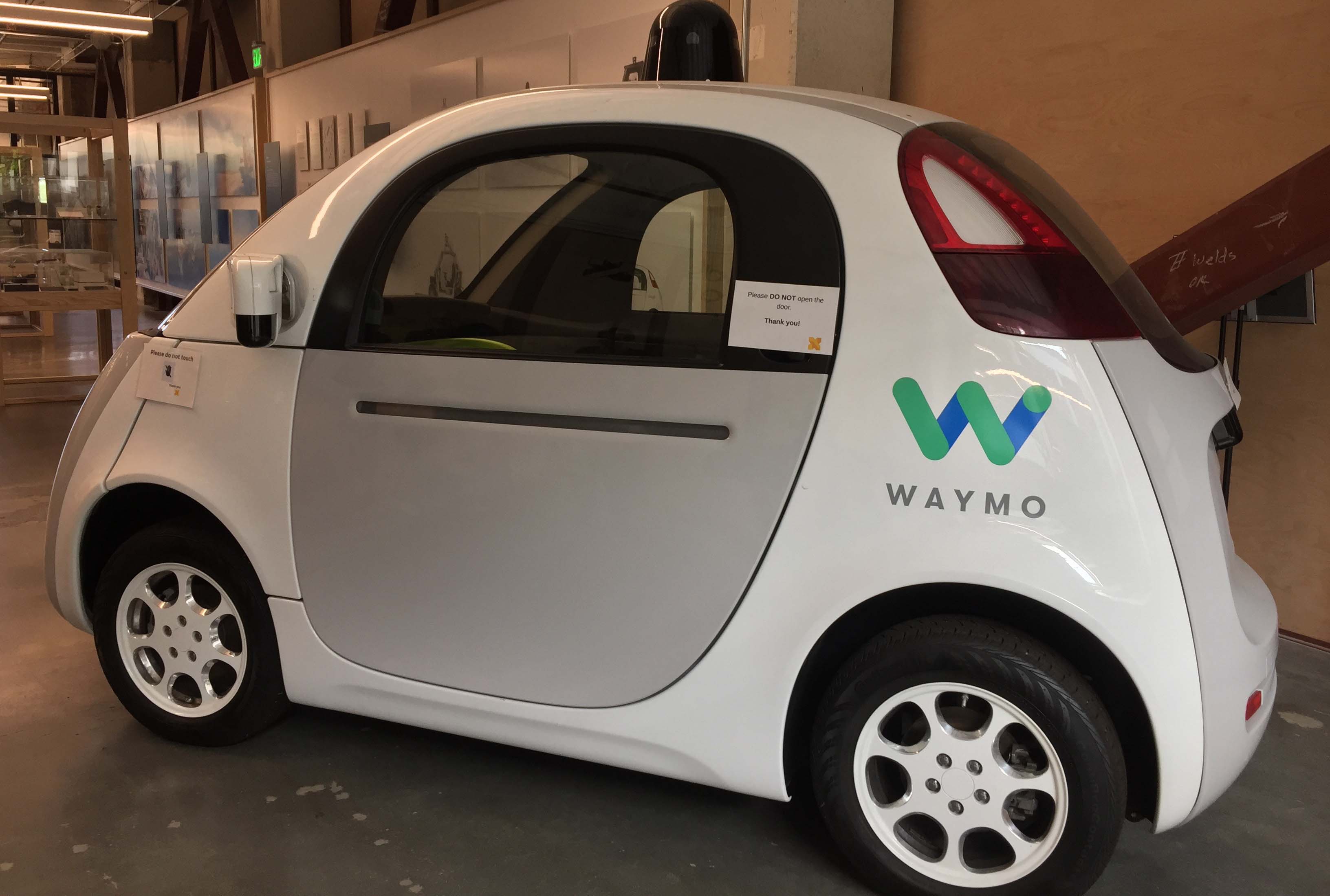
A model of Waymo, the self-driving car.
Are the people of X psychic? No, said Teller—they are more like systematic innovators who live by five principles:
Aim high, do things 10 times better.
F
all in love with the problem, not the technology.Use
failure as a learning mechanism.Get out in the real world—
fast.Be
humble, let others step in when you have failed.One figures that being in such a place would feel like going gambling, with the intoxicating rush associated with the possibility of winning. But that’s the opposite of what it should feel like to be there, Teller said. “We’re trying to be the card counters of innovation, not the gamblers,” he said, referring to blackjack players who devise clever systems to anticipate upcoming cards.
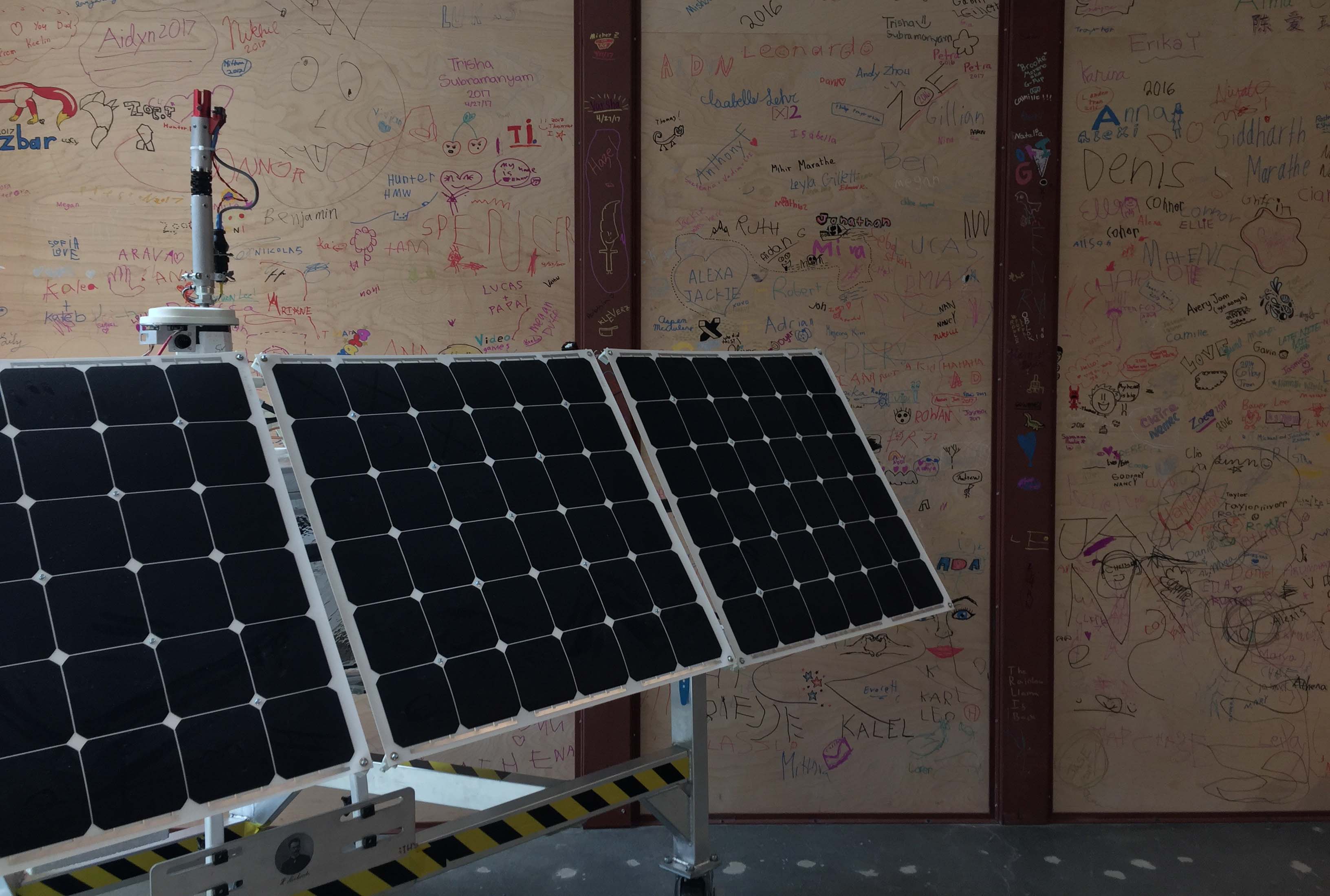
A solar panel and wall inside X signed by children of the employees.
Later, Sal Candido, an engineer from X’s Project Loon, joyfully arrived and brought us up to date. The Loon team’s objective is to provide Internet service to unconnected people worldwide. They build from existing networks by using enormous balloons that float in the stratosphere. The balloons are equipped with redesigned components of a cell tower, solar panels that direct them toward the sun, and a self-learning system. Oh, and they have their own launching robots on the ground.
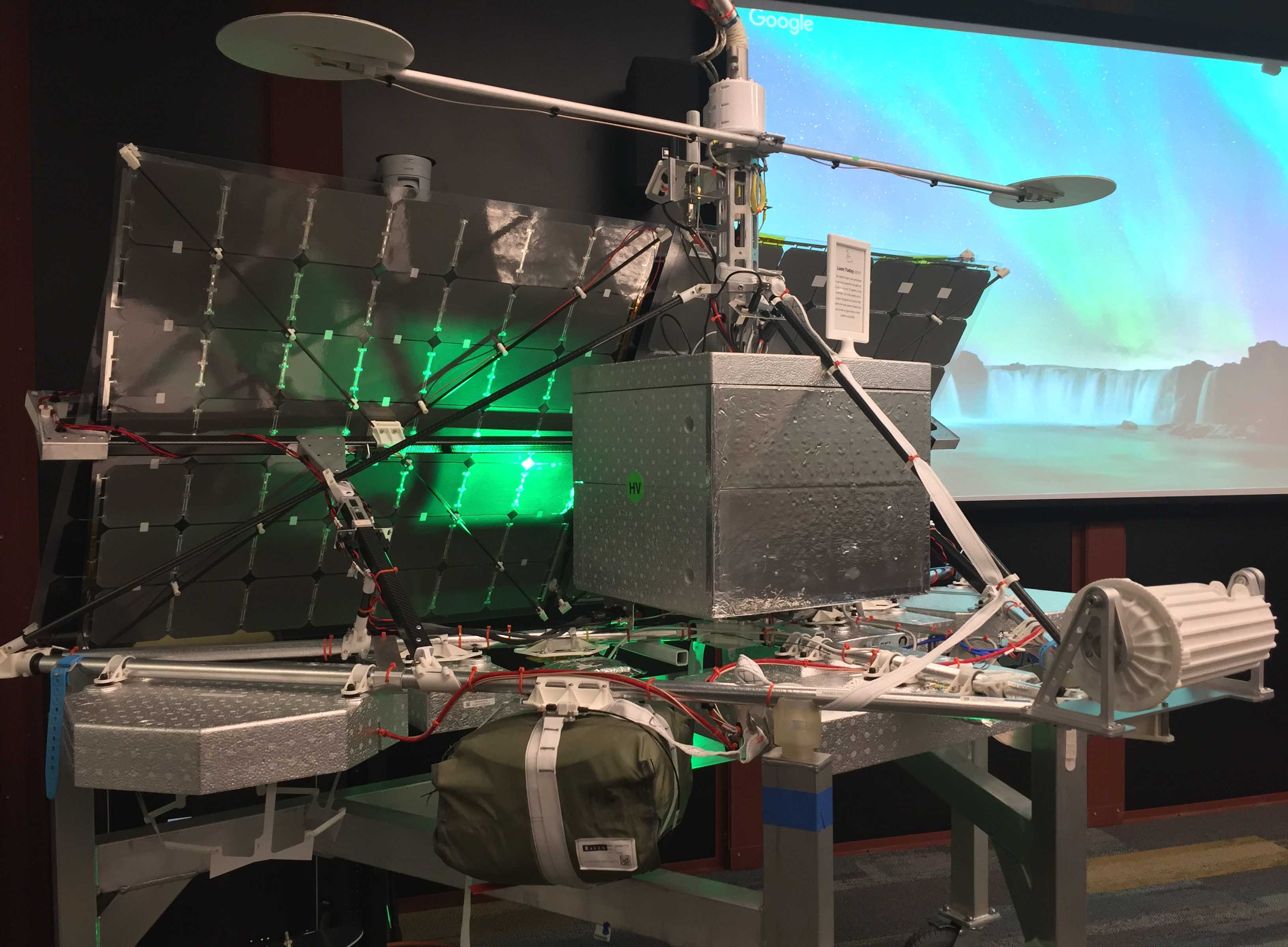
A model of equipment from Project Loon.
While Loon engineers were testing at a site in Peru, Candido noted, a severe flood hit the country. To help, they paired up with Telefonica—the huge Spanish telecom company—and lent their services. “Very quickly, it became a real thing,” he said.
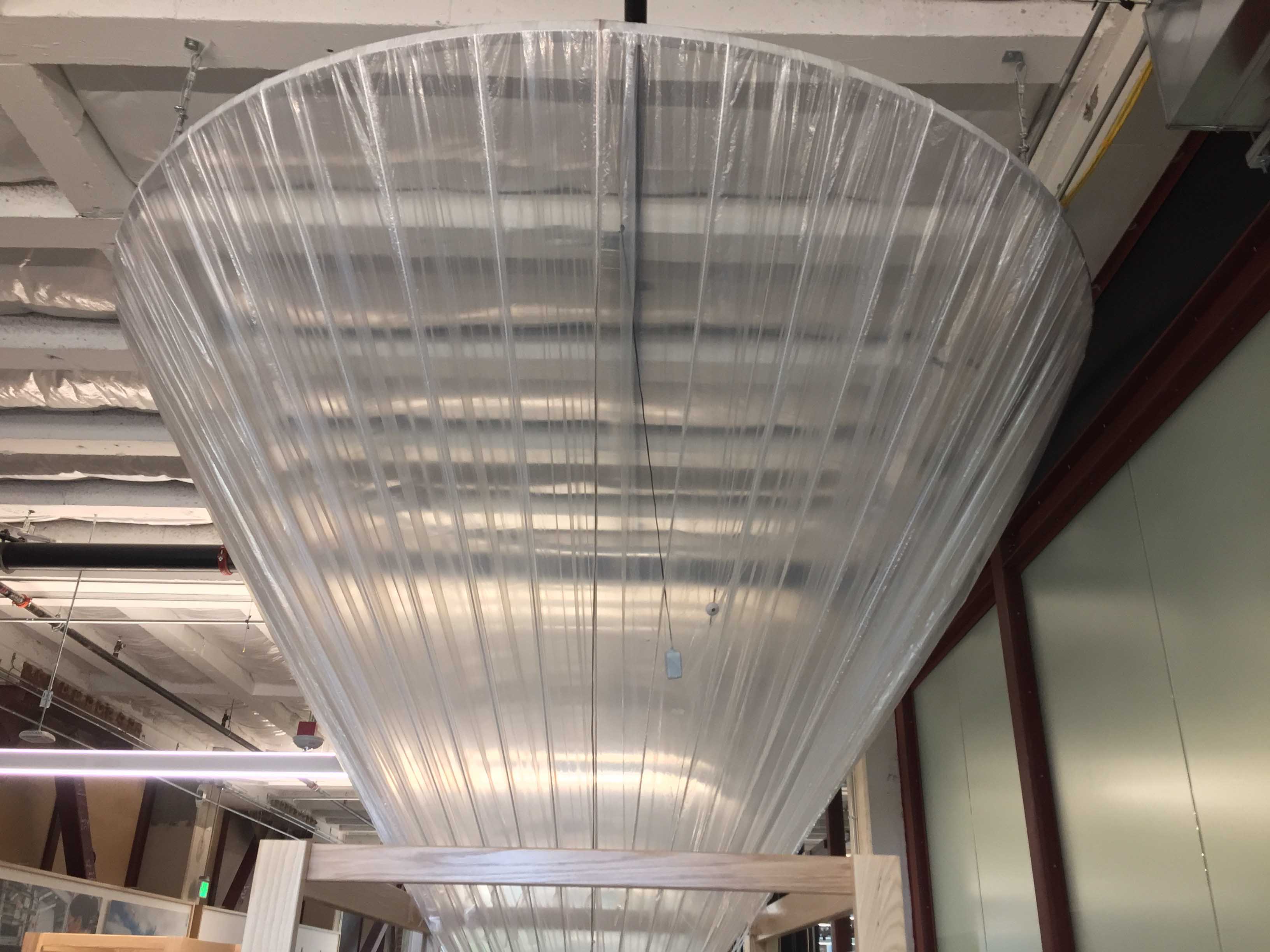
The smallest part of a Project Loon balloon.
Later in the tour, our group learned about the four stages to become a Moonshot project.
Proving ideas wrong
First comes “Rapid Evaluation,” where experts do everything to prove an idea won’t work. If it survives, the idea moves on to “The Foundry,” where a multidisciplinary group find its Achilles heel and tries to solve it. If it then becomes an “X project,” the company hires a general manager and pilot testing begins. And if they’re sure the project can become a successful business, it enters the “Graduation” phase.
Yes, X keeps much hidden, but the company is young—and in seven years, its engineers have graduated ten projects. It’s too soon to know how helpful they’ll actually be.
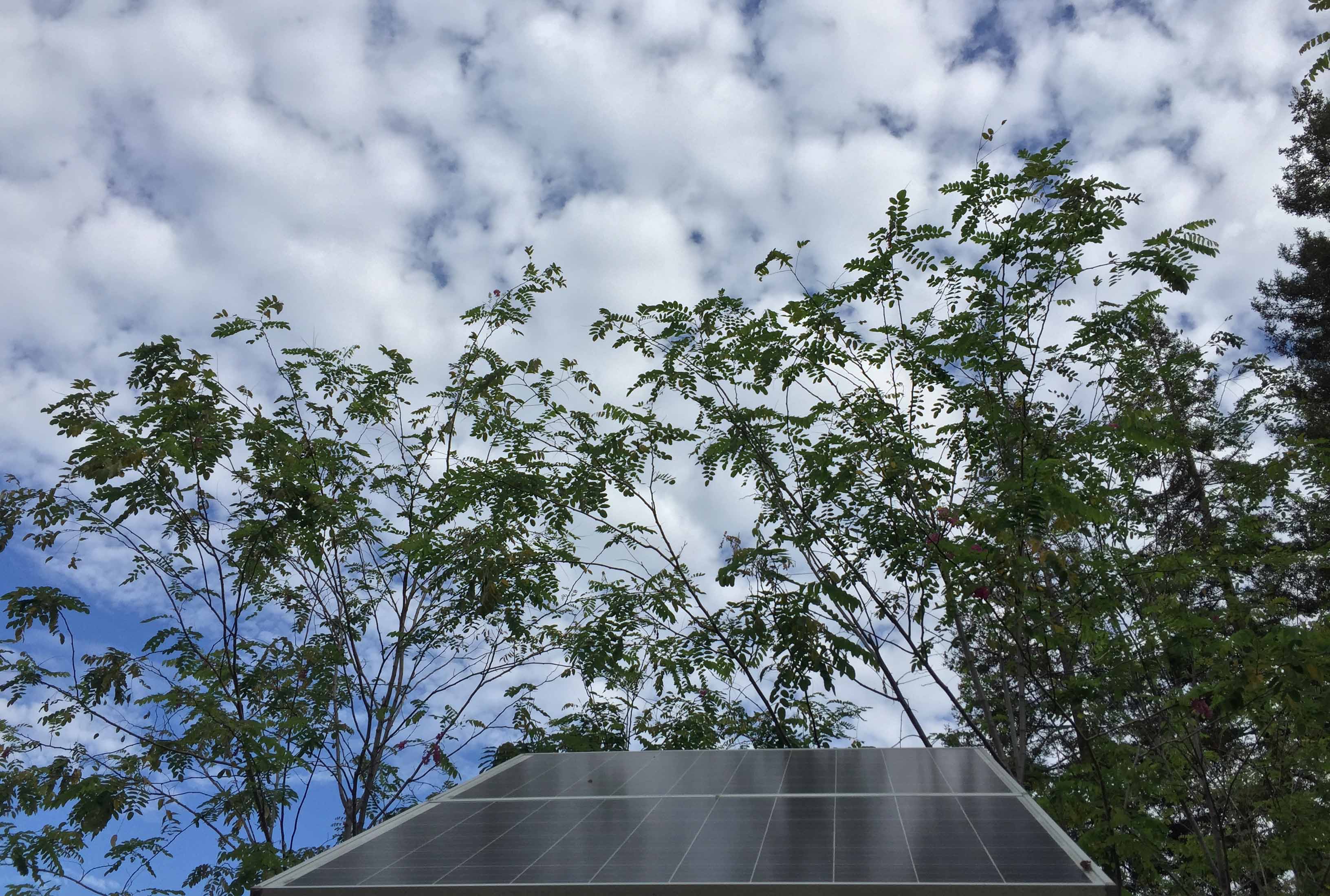
A solar panel just outside the visitor lobby at X.
We may remain skeptical, while at the same time wishing the engineers will prove us wrong. With X and other innovation companies, and a hope for active cooperation with governments and societies, the future starts to look just like the moon: distant, yet shiny.
—
Inés Gutierrez is an undergraduate student in biology at UNAM, Mexico City, and a freelance science writer. She also creates visual images using different types of microscopes to accompany music and create an audiovisual experience. Contact her at nesnes324@gmail.com and follow her on Instagram.
